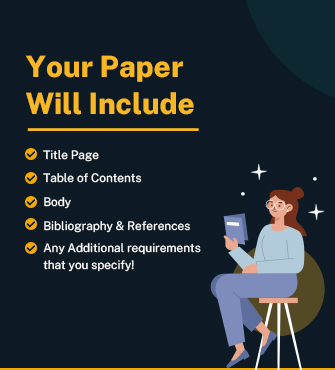Essay Guide
- Structure of the Essay
- How to write an essay
- Main Types of essays
- Argumentative
- Expository
- Narrative
- Descriptive
- Type of Analysis
- Compare and contrast
- Literary analysis
- Rhetorical analysis
- Personal statement
- Statement of purpose
- Essay structure
- Structuring an essay
- Outlining
-
- The introduction
- Essay introduction
- Thesis statement
- The body
- Writing the body
- Paragraph structure
- Topic sentences
- Transition sentences
- The conclusion
- The introduction
It is important to note that the essay is the kind of academic writing that is consistently assigned to students throughout their educational journey, spanning from primary school to university. At every school level, students receive instruction on the techniques and strategies for composing an essay. The methods of composing essays undergo evident modifications as students’ progress to higher academic levels. Although the fundamental principle or framework stays unaltered. The purpose of this essay guide is to provide an informative overview of essay writing, including its structure, different types of essays, and relevant aspects, with the aim of assisting students at all academic levels in enhancing their essay writing skills.
A significant proportion of tertiary and secondary education revolves around the composition of academic essays. Academic assessments are highly proficient in evaluating students’ comprehension of a particular subject matter and effectively highlighting their aptitude in collecting and presenting relevant information and data. This guide on how to write an essay is meant to explain the framework, format, and process of writing a high-quality academic essay.
Understanding Essay – A Brief Essay Writing Guide
Students in school, college, and university write academic essays, which are well-organized pieces of writing. Most of the time, this kind of writing is done to share new information or to make a point using facts and information that people already know. Students can show what they know and how creative they can be with this kind of work. It also makes them want to work on their ideas to get a point across.
Essay and its Sub-Groups
You need to know everything there is to know about essay writing in order to write a good essay. The word “essay” comes from the Latin word “exagium,” which means, “to present one’s case.” An essay is a piece of academic writing that is supposed to show the writer’s point of view or opinion on a certain subject.
People possibly think that writing an essay is the same as writing a story, a paper, or an article because they are all very personal. Whether you need to write an essay for school or college, they fall into one of two groups.
- Informal essays
- Formal essays
Most of the time, students are given written essays to write for school because they are more academic in nature. Kilroy J. Oldster says that;
Writing is about getting involved with the text and the author’s mysterious ideas. When our words are strung together, they finally change us, giving light to the new language and colorful palette of our soul.”
When these complex ideas are supported by evidence and strengthened by logical reasoning, they fit seamlessly to the standards of essay composition.
What You Need To Do Before Writing An Essay:
Essays are usually shorter than other types of academic writing, and the writers’ opinions are used to back up their points. Here is an academic essay writing guide for the most important parts of an essay that you should remember:
Conciseness: Most writings are short; they range in length from 200 to 500 words.
Topic: Essays are short; a good topic should be narrowed down and not too broad.
Well-organized Text: Even though essays are one of the least formal types of writing, they still need to be well-organized and follow the right style for an academic paper.
Clear Main Idea: Every academic essay should make a clear and strong point (called a “thesis statement”), which is the main idea.
Personal Interest: Unlike other types of writing, essays often give the impression that the people who wrote them are interested in the topics they are writing about.
Evidence and Supporting Facts: Essays may include the author’s own ideas and beliefs, but they should also include arguments that back up those ideas.
How to write an essay
You must have been in a situation where you rested in front of your computer screen or a blank sheet of paper with a pen and a strong topic written on it. Well! We have all been through this stage, which happens for two reasons: first, the writer does not know much about the topic, and second, the writer does not know how to write an essay. If the second reason is true, the following guide on how to write an essay will help you write an essay well;
- Outline or structure the essay.
- Study the topic.
- Highlight key remarks to avoid missing them.
- Divide your task into manageable chunks.
- Start content assembling.
- Focus on your essay’s question or statement.
- If necessary, add citations and choose a format based on your topic, such as MLA, APA, Harvard, etc.
- Put your material in order or chronologically.
- Proofread and revise your entire content before submitting.
Steps to Write an Essay – A Professor’s Guide to Writing Essays
Follow these seven steps for optimal results:
Read and comprehend the prompt: Be aware of the requirements. Partitioning the prompt is smart.
Plan: Brainstorming and organizing will make essay writing easier. Making a web of your ideas and supporting details is smart.
Refer to sources: Do research. Quote and paraphrase, but never plagiarize.
Write a Draft: Ernest Hemingway said, “The first draught of anything is always crap.” This assertion may be true, but draughts are a fantastic location to get rid of “crappy” ideas and are typically needed by professors and instructors.
Develop a Solid Thesis: The thesis is the most crucial part of the essay. Strengthen your point.
Answer the Prompt: After fixing any errors in your draught, you can write your essay’s final draught.
Proofread: Check your response for errors and omissions.
Main Types of essays
Students in higher grades often write an essay proposal before they write the actual essay. This proposal gives an outline of what your essay will be about and what kind of essay you plan to write.
We often hear terms like “application essay” or “personalized essay.” These are not types of essays, though; they are types of writing. The language, tone, splits types of essays or style the writer used to make his point. There are five Types of essays. Four of them are;
Argumentative:
In an argumentative essay, you take a strong stand on a certain topic. A strong argumentative essay uses evidence and facts to back up the claim it is making, regardless of what the writer thinks or believes, to make strong arguments. An argumentative essay has five main parts.
- Claim
- Reason
- Evidence
- Counter-claim
- Rebuttal
In short, an argumentative essay is one in which the writer takes a stand on a debatable topic and fights for his point of view with proof.
Expository:
The expository essay is a type of essay that requires the student to do research on a topic, assess the evidence, explain the topic in more depth, and make a clear and concise argument about the topic. The following parts must be in any piece that explains something:
- Straight to the point.
- Transitions between paragraphs that make sense.
- Body part of the essay backed up by evidence.
- A conclusion that shows how the main idea is true.
In an expository essay, you can write a compare-and-contrast essay, an explain essay, or an example essay.
Narrative:
In a narrative essay, as the name suggests, you tell a story. Most of the time, this is a story about something a person has done or seen. This type of essay and a description essay give the student a chance to be creative and show who he is, which not the case with most academic writing is. A story essay is simple and easy to write. It should be written in this way:
- A good story title has a battle and a lesson.
- The introduction sets the stage for the story.
- The middle paragraph tells what happened.
- In the end, conclusion.
Students are given narrative writings to test how well they can tell a story.
Descriptive:
This is another way to write an essay that speaks for itself. It is a type of writing in which the student is asked to describe something, someone, a place, an event, a feeling, a situation, etc. Students learn how to write about a specific event by doing this kind of writing. Here are some things that will help students write a good essay about describing something;
- Learn about the subject.
- Use clear words to talk about the topic.
- Do not go off-topic.
- What did you think when you first saw the subject?
Give the reader a clear picture of what you have talked about. To write a good descriptive essay, you should know exactly what you are trying to explain.
Type of Analysis
Analyzing and evaluating what you have written is a big part of academic writing. During analysis, you can put the information in its proper place and explain it to your reader. In your analysis, you can tell the reader why the information is important, what it means, or how it fits with other ideas in your work. Remember that synthesis is a longer and more involved form of analysis that often comes after analysis. This essay writing for students provides a practical guide that will help you do well. The following types of study are used to make essays for school
-
Compare and contrast:
By comparing and contrasting the subject with other things in the same field, the audience can learn more about the subject. When you compare or contrast two things side-by-side or through points, you cannot get anything wrong.
Some words and sentences that writers often use to compare things are;
- Similarly
- Likewise
- In contrast, and so on
-
Literary analysis:
A literary analysis is a piece of writing that looks at and analyses a piece of writing, either in its entirety or in part. Writing a full literary review is a useful skill, but it takes practice and an understanding of how literature works. When it comes to the study of literature, an essay generally looks at:
- Character development.
- Plot twist.
- Genre and type of writing
-
Rhetorical analysis:
The word “rhetoric” comes from the meaning, “How words are used to convince.” A rhetorical essay is a type of analysis essay that breaks down a piece of nonfiction into its parts and looks at how those parts work together to make a certain effect. It can be used to convince, amuse, or tell someone something. The following parts can make up a persuasive essay:
- Picture
- A commercial
- Speaking, and so on
Personal statement:
A personal statement essay is a 500–1,000-words essay. A tone of a personal statement tells an exciting story about who you are, what drives you, and why you are applying for any program.
Instead of summarizing your experience, construct a focused narrative in your own voice for a graduate school personal statement. Try to show three things:
Your personality: What are your values, interests, and motivations?
Your skills: What can you offer the program?
Your aims: How do you want the program to help you?
Statement of purpose:
Statements of purpose are more formal and focus on the student’s academic or professional ambitions. It must not include anything that is in any way not directly connected to the program you are applying for. A sop statement of purpose should be on point, clear and concisely focused on your professional growth.
This guide has tips that will help you make an essay outline for you, decide on its structure, and organize your text in a logical way.
Essay Structure:
You will learn all the basics of essay structure from outline to the main parts of an essay. This comprehensive academic essay writing guide will provide you the access to the successfully engaging essay writing.
Structuring an Essay:
The basic structure of an essay is always an introduction, a body, and an end. However, for many students, the hardest part of putting together an essay is working out how to organize the information in the body.
Outlining:
Before you start writing, you can plan the framework of your essay by making an outline. Outlining essay involves writing short summary sentences or phrases for each point you will talk about in each paragraph. Before you start writing an essay, you may be asked to hand in an outline as a separate task. Even if you do not have to, it is a good idea to make an outline as part of your writing process.
-
The introduction
In the beginning of essay introduction writing, you usually state your topic or research statement and explain what you plan to talk about in the rest of the paper. With the best introduction for an essay, you can give your reader an overview of your topic and set the stage for each body paragraph.
Essay introduction:
The introduction is the first paragraph of an essay. It should give a brief overview of the topic and a summary of your important points for answering the question. The rest of the essay goes into more detail about these ideas, which brings you to your conclusion.
Thesis statement:
A thesis statement is usually written at the end of the introduction. The words before and after it will support and describe it. A thesis statement tells the reader what will come next, just like a topic sentence does for a paragraph.
-
The body
In the body of your essay, you can go into more depth about your research and arguments. You can also prove what you say with facts, study, and other evidence. You can back up your ideas or points with links and quotes from other sources.
Writing the body:
Try to stick to one point or idea per paragraph in the body of your essay so that your writing is as clear as possible. Also, make sure that the first sentence of each paragraph is a topic sentence that relates to your major idea or thesis. This will keep your writing clear and interesting.
Paragraph structure:
A good body paragraph has three main parts: a topic sentence (or key sentence), appropriate supporting sentences, and a closing sentence (or transition sentence). With this arrangement, your paragraph will stay focused on its main idea and give clear, concise information.
Topic sentences:
A topic sentence states the main idea of a paragraph and helps prove the main point of an essay or paper. The topic sentence is usually the first line of a paragraph. It introduces the topic of the paragraph by stating the main idea or point of view about it.
Transition sentences:
Transition sentences show how two or more ideas connect to each other. Think of them as bridges, tunnels, and merges that connect different parts of your writing, with certain words and phrases working as road signs.
-
The conclusion
The last paragraph of your essay is conclusion writing. While writing an essay conclusion you can summarize what you have said and show how the different things you have talked about in the body paragraphs connect to each other. Writing a strong essay conclusion is a good way to show the reader how important your point is as a whole. Depending on the type of essay you are writing, you might use a “call-to-action” line to tell your readers what you want them to do. For example, if your article is about recycling, your call to action might tell your readers to start recycling themselves.




